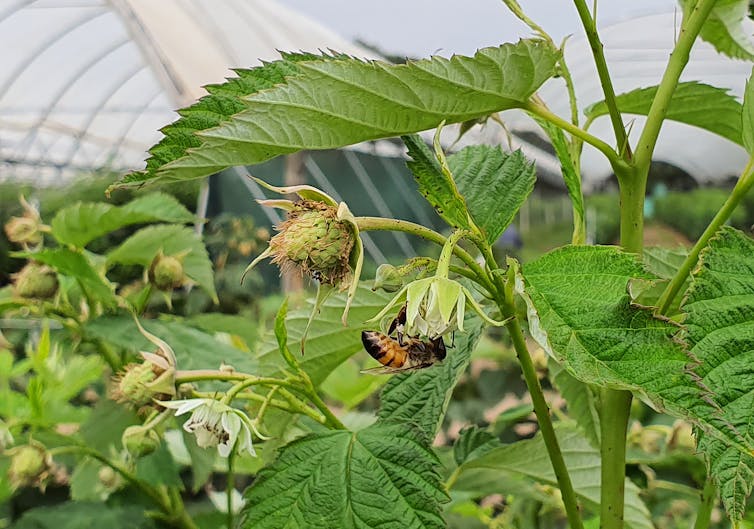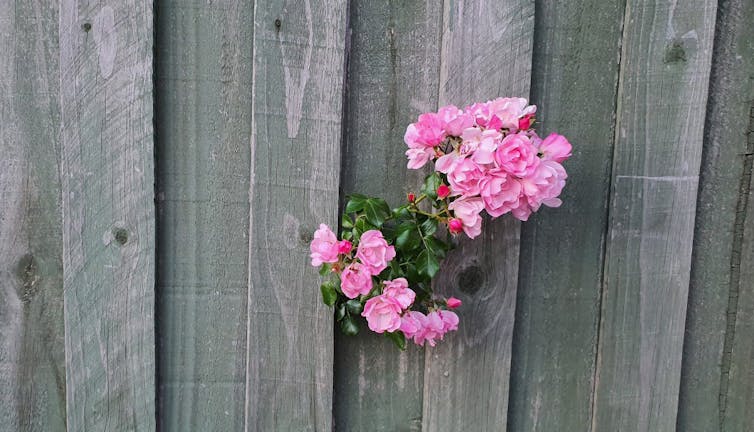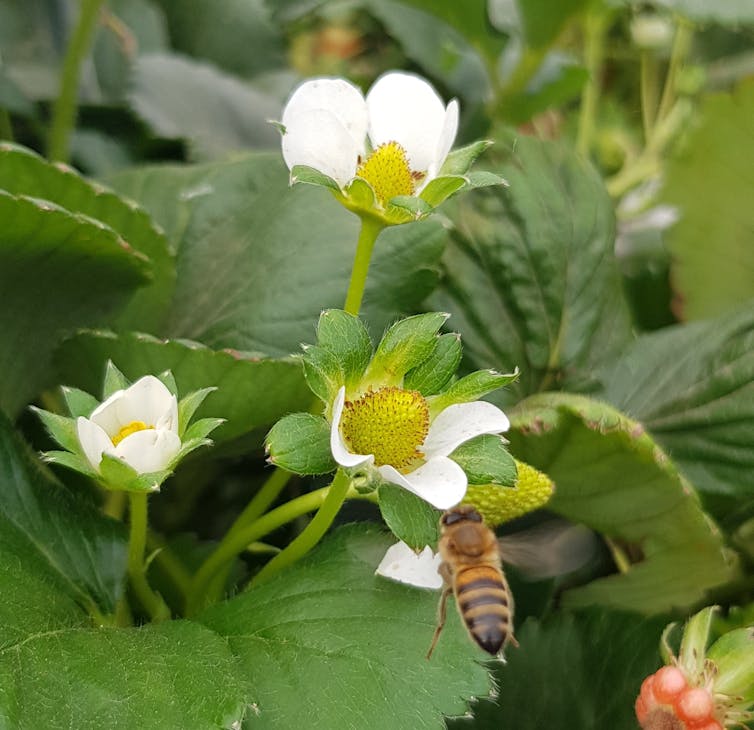One, then some: how to count like a bee
- Written by Scarlett Howard, Postdoctoral research fellow, Deakin University
If you were a honeybee, how would you choose where to find flowers? Imagine your first flight out of the hive searching for food. What would you do if you saw flower patches with one flower, or three, or twelve, or twenty?
Our new study, published in the Journal of Experimental Biology, tested honeybees on exactly this question. We wanted to understand how honeybees choose where to forage in environments like greenhouses where our food is pollinated, in local parks, or in our own backyards.
Specifically, our research looked at whether honeybees with no specific numerical training could choose a flower patch based on the quantity of flowers it had.
We found the bees could tell the difference between groups of 1 vs 4 flowers – but not between, say, 4 vs 5. Basically, they couldn’t differentiate between groups of 2 or more flowers.
 A honeybee pollinating a strawberry plant flower in a greenhouse.
Adrian Dyer/RMIT University
A honeybee pollinating a strawberry plant flower in a greenhouse.
Adrian Dyer/RMIT University
A mathematical matter of life and death
The ability to tell the difference between two quantities can mean life or death for an animal. “Quantity discrimination” can be vital for survival in tasks including:
resource comparison: choosing a larger quantity of food
aggressive interactions: choosing to avoid conflicts with larger groups of individuals, and
avoiding predators: choosing to stay with a larger group of animals of the same species to reduce your chance of being eaten.
We are gaining a better understanding of quantity discrimination across the animal kingdom. Primates and other mammals, amphibians, reptiles, birds and fish all display some form of quantity discrimination in day-to-day tasks. For example, fish use quantity discrimination to stay in larger groups to reduce the chance of being eaten by a predator.
However, little is known about spontaneous number choices by insects.
Read more: We taught bees a simple number language – and they got it
How do bees choose where to forage?
Honeybees assess the available flowers based on several factors, including scent, colour, shape and size.
 Backyard flowers; which patch to choose if you were a bee?
Adrian Dyer/RMIT University
Backyard flowers; which patch to choose if you were a bee?
Adrian Dyer/RMIT University
Honeybees typically visit around 150 individual flowers per flight from the hive to collect resources such as nectar or pollen. For a honeybee, a high quantity of flowers in a single area would mean less energy exertion than having to fly to many flower patches with less flowers.
Using different numbers of artificial flowers, we wanted to test whether individual honeybees could discriminate between a range of quantities, and how they might determine the quality of a flower patch.
Our honeybees were shown pairs of flower quantities ranging from easier number comparisons (such as 1 flower vs 12 flowers) to more challenging scenarios (such as 4 flowers vs 5 flowers).
 The experimental set-up (left) and the quantity comparisons (right). Honeybees succeeded at spontaneously discriminating between 1 vs 12, 1 vs 4, and 1 vs 3 flowers, but no other comparisons. The honeybees were trained to associate single yellow dots with sugar water before being shown quantity comparisons.
Scarlett Howard
The experimental set-up (left) and the quantity comparisons (right). Honeybees succeeded at spontaneously discriminating between 1 vs 12, 1 vs 4, and 1 vs 3 flowers, but no other comparisons. The honeybees were trained to associate single yellow dots with sugar water before being shown quantity comparisons.
Scarlett Howard
Interestingly, despite previous findings that trained honeybees can discriminate between challenging quantities and can also learn to add and subtract, the bees performed poorly in our spontaneous number task.
We found they were only able to discriminate between 1 vs 3, 1 vs 4, and 1 vs 12 flowers – wherein they preferred the larger quantity. When 1 flower was an option they succeeded, but confused any comparisons between groups of 2 flowers or more.
This result suggests flower patch choice based on numerical-type cues is difficult for honeybees. And this has implications for how flower displays are interpreted.
 A honeybee flies towards three flowers.
Scarlett Howard
A honeybee flies towards three flowers.
Scarlett Howard
With today being World Bee Day, why not take the opportunity to discover what bees are doing in gardens near you. Chances are they’re going to any flower patch with more than one flower, rather than paying much attention to absolute numbers.
Read more: Bees learn better when they can explore. Humans might work the same way
Authors: Scarlett Howard, Postdoctoral research fellow, Deakin University
Read more https://theconversation.com/one-then-some-how-to-count-like-a-bee-138815




